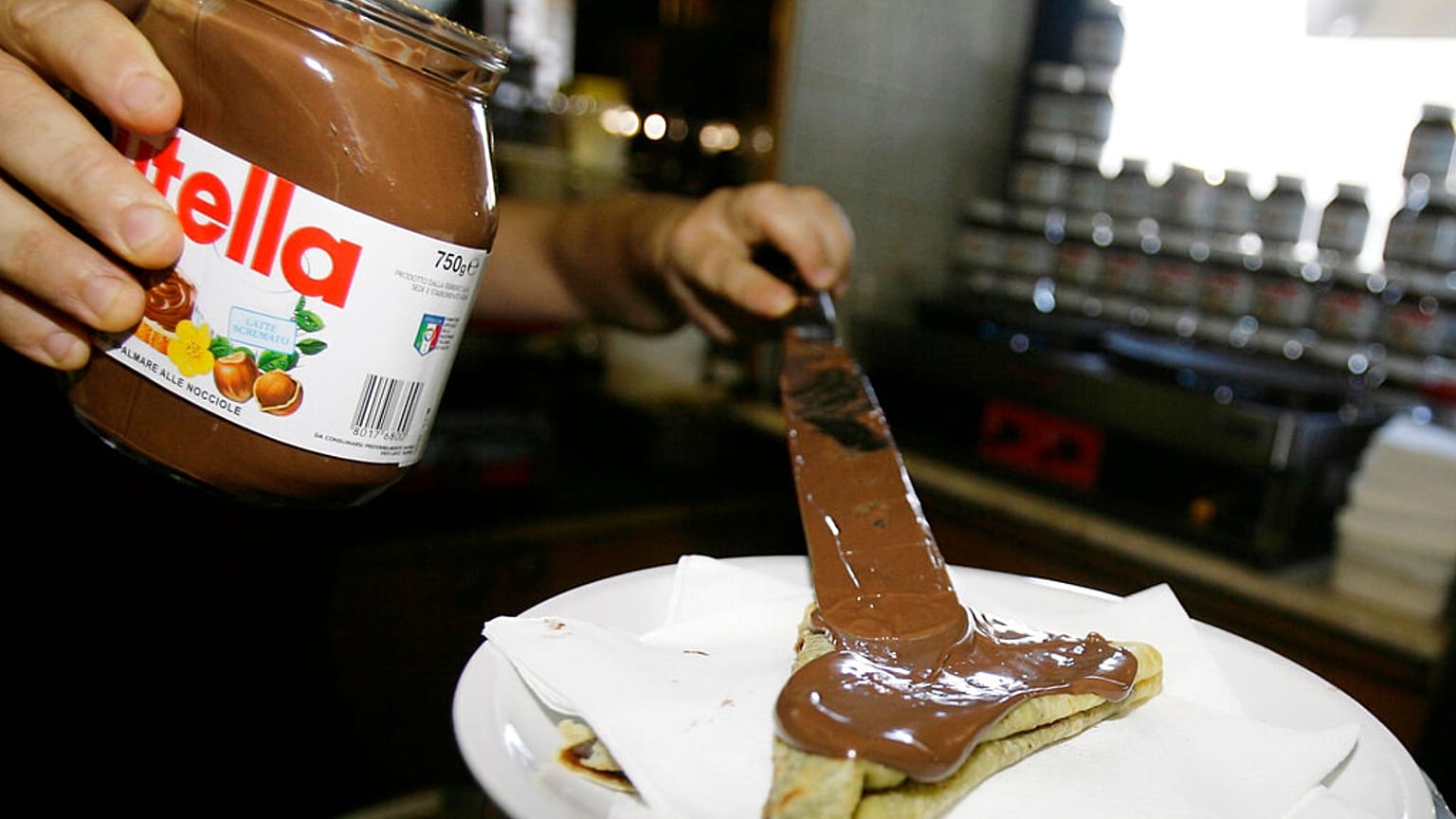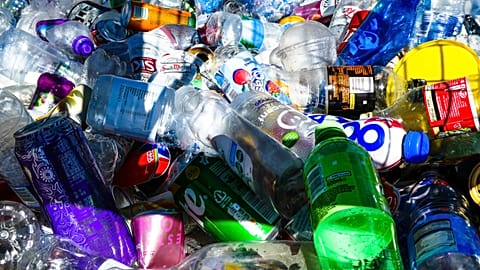Replacing milk cuts the spread’s carbon footprint, but experts say that removing palm oil would have a bigger environmental impact.
Food giant Ferrero has started selling a vegan version of its Nutella hazelnut spread in France, Belgium and its home-country Italy.
Easily identifiable with their green pots, vegan Nutellas aim to satisfy a growing demand for food avoiding animal products, Ferrero said in a statement on Tuesday.
Instead of skimmed milk powder, the recipe adds vegetable ingredients such as chickpeas and rice syrup. As the vegan Nutellas are manufactured in a facility that handles milk, they are not suitable for consumption by people allergic to milk proteins, the company warned.
Do vegan Nutellas have a lower carbon footprint?
The substitution of cow milk for less carbon-intensive products means these vegan Nutellas should be less harmful to the planet than their traditional counterparts.
Even if they still emit some methane, “vegetable proteins are better for the climate than milk protein,” says Corentin Biardeau, agriculture and food engineer at climate think tank The Shift Project.
This is backed up by data from carbon accounting platform CarbonCloud. It calculates that skimmed milk powder generates 15.5kg of CO2e per kg, while chickpeas account for a meagre 0.4kg of CO2e, and brown rice syrup comes in at 1.77kg of CO2e (there’s no Carbon Cloud date for white rice syrup).
Vegan Nutella still contains controversial palm oil
However, milk powder only accounts for a small share (8.7 per cent) of the Nutella recipe.
“Replacing it has some effect, but that's not where the big issue lies,” says Biardeau. “If Ferrero had really aimed for an eco-friendly product, they would have had to replace palm oil first,” he adds.
Palm oil, which contributes to deforestation in Southeast Asia, remains a key component of the recipe, even though its exact share isn’t disclosed on the product label.
Inexpensive and with unbeatable yields, palm oil is the most widely consumed vegetable oil in the world. Produced mainly in Indonesia and Malaysia, 80 per cent of palm oil is used for food, 10 per cent for cosmetics and 10 per cent for biofuels.
Alternatives like rapeseed and sunflower oil emit two to three times less carbon dioxide than palm oil, according to the French environmental agency database Agribalyse.
These substitute oils release on average 2.28kg of CO2eq per kg and 2.58kg respectively, versus 6.04kg for palm oil, it says.
Why is the vegan version more expensive?
Some experts also question the price of this product, which is more expensive than the milk-based one.
While a 350g jar of vegan Nutella works out at almost €12 per kilo, the classic version costs between €6 and €11 per kilo (depending on format).
“We're surprised that the vegan version is more expensive, even though plant proteins are cheaper than milk, which is itself probably not paid at high enough prices to farmers,” says Biardeau.


















